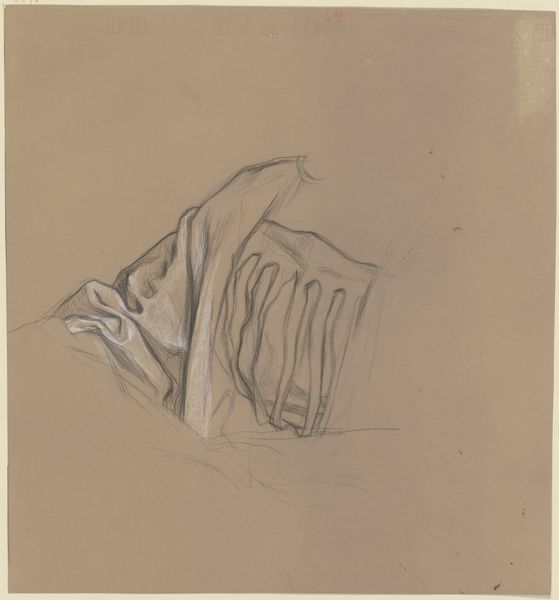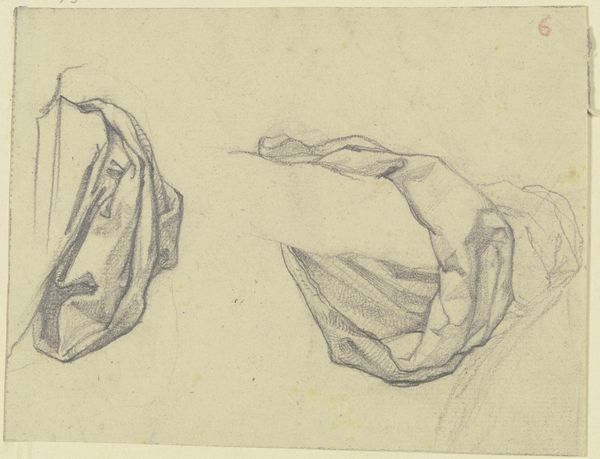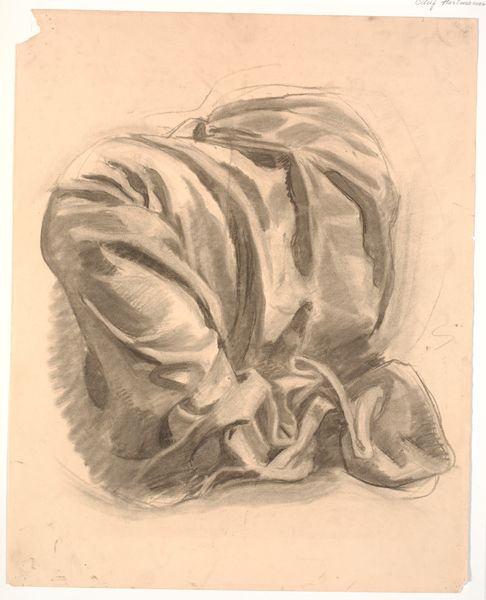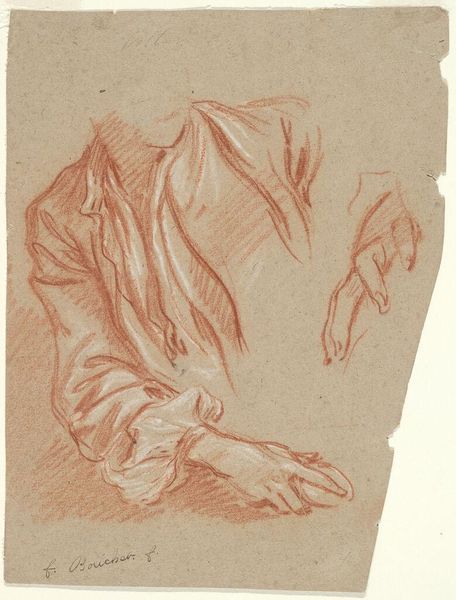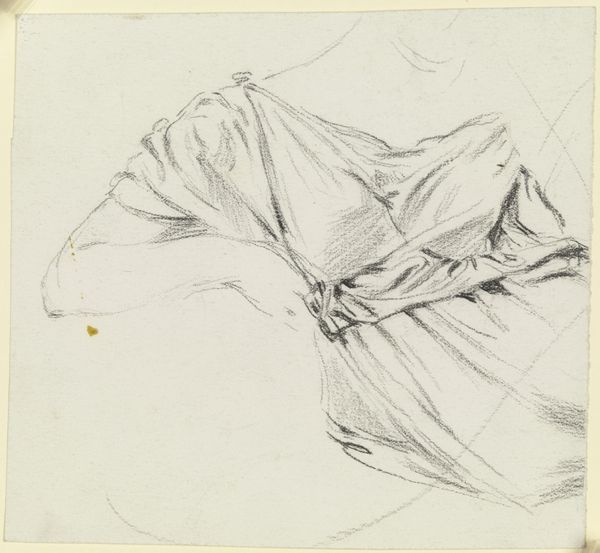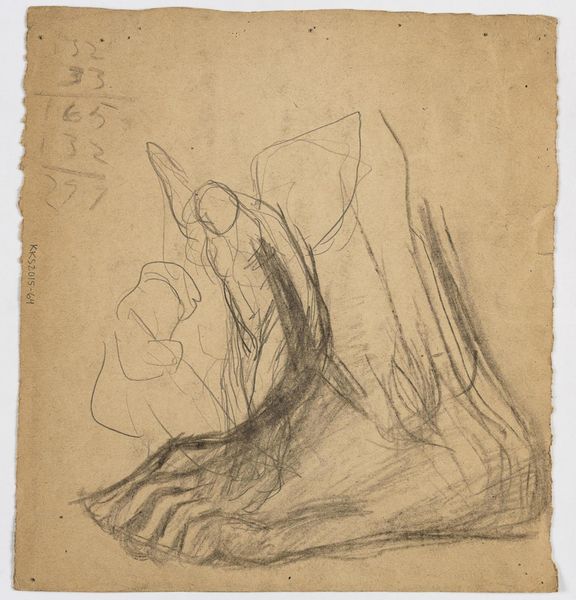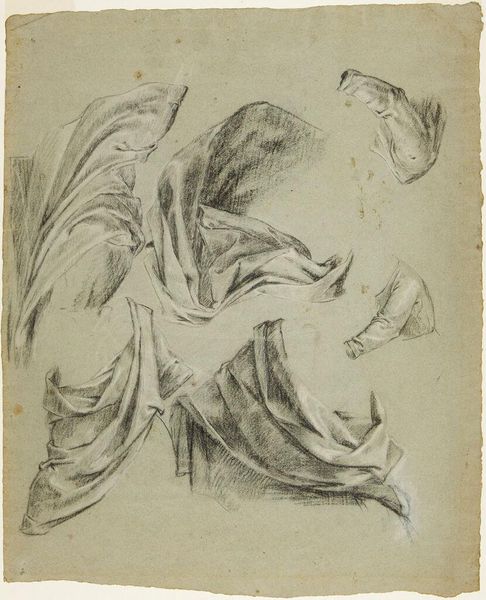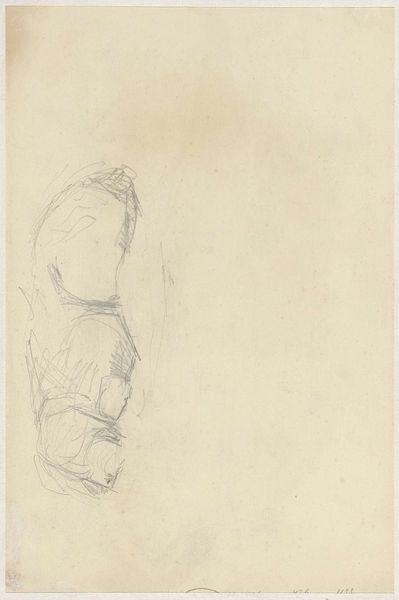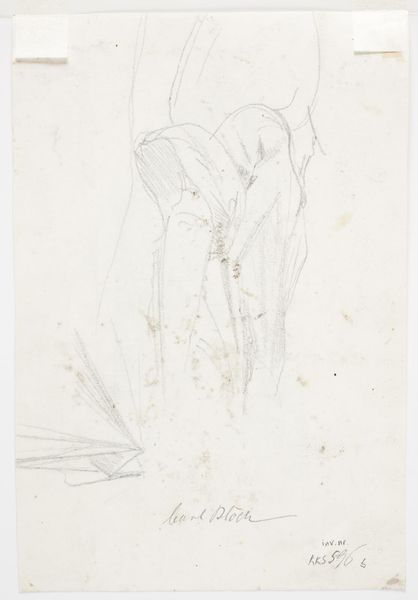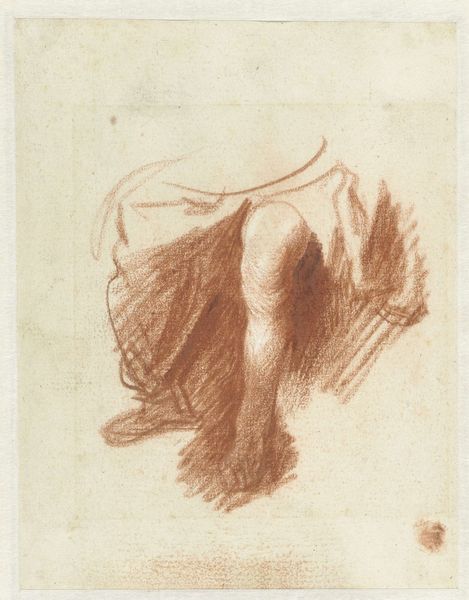
drawing, pencil
#
drawing
#
pencil sketch
#
form
#
pencil
#
line
#
northern-renaissance
Dimensions: height 131 mm, width 97 mm
Copyright: Rijks Museum: Open Domain
Editor: We're looking at "Draperiestudie" by Jan ter Borch, a pencil drawing from before 1635 housed at the Rijksmuseum. It's essentially a study of fabric, but there's something quite elegant about the way the lines capture the folds. What historical and cultural significance can you ascribe to such a detailed study? Curator: Well, drapery studies were a crucial element in artistic training during this period. They weren't just about replicating the appearance of fabric, but about understanding how light interacts with form and volume. Think about the prominent role of textiles in 17th-century Dutch society: status, wealth, and even religious piety were communicated through clothing and interior fabrics. In that sense, could a drawing like this be considered a type of cultural document? Editor: That's a fascinating idea, viewing it as a reflection of the social importance of textiles. I hadn't considered that the display of skill in rendering fabric could be a status symbol in itself, reflecting patronage or an aspiration to elevate the genre. Curator: Exactly. The ability to depict sumptuous fabrics convincingly was a highly prized skill for painters seeking commissions, and drawings like this demonstrate that facility. Ter Borch's dedication to studying drapery highlights the value placed on realistically representing the material world in art. And it makes one wonder about the artist's intention behind it. Was this commissioned or made for self-reference? Editor: So, it's both a practical exercise and a commentary on societal values related to textiles? Thinking about it that way helps me see the drawing as much more than just a technical study. Curator: Precisely. It’s a window into the artist's training, the art market of the time, and the cultural significance of textiles in Dutch society. Art seldom stands apart from society, does it? Editor: Not at all. This conversation gave me a new lens for considering such artwork. Thanks so much!
Comments
No comments
Be the first to comment and join the conversation on the ultimate creative platform.
